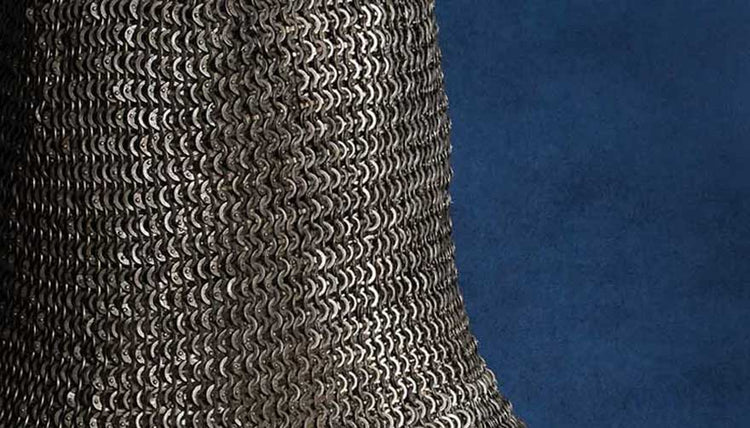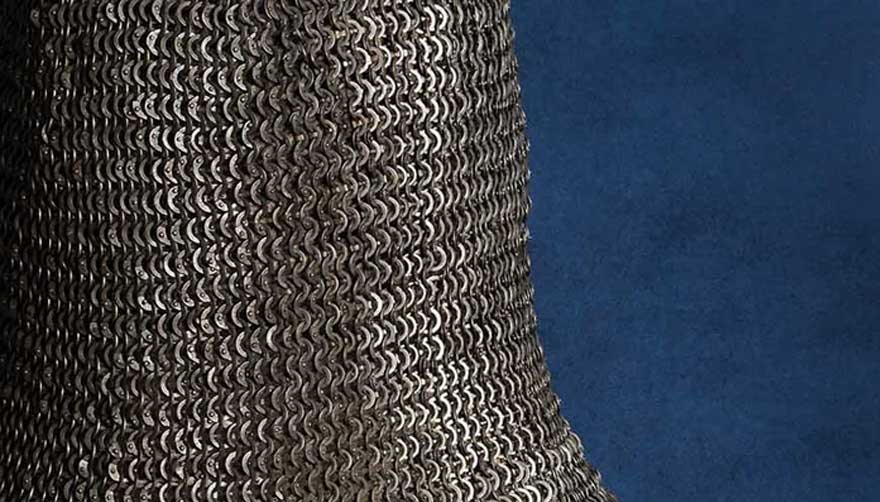Chain Mail
The body of a knight is a fighting machine, which had to prove itself again and again on the battlefield during the Middle Ages. Warriors were well-trained fighters who knew how to handle different weapons to perfection. They perfected their fighting skills over countless hours of training, tested them in tournaments, and used them to honor their lord and faith in hand-to-hand combat, often to the death.
In addition to strength and skill in dealing with a sword, lance, bow, or other weapons, a successful warrior required a basic understanding of anatomy. Putting one’s opponent out of action with one calculated blow was not just a matter of efficiency, but survival.
The reality would have been, outside of tournaments, much clumsier and more brutal. Nevertheless, a fighter learned to hit their opponent where a blow or a thrust could cause the most damage. It was not always a matter of killing them as quickly as possible. It was enough to incapacitate. It didn't always take much to do that. A head wound usually meant the end just as much as a severe injury to the arms or legs. Those who didn’t quickly receive help from the skillful hands of a medic often bled out on the battlefield or succumbed to infections from injuries, which would be comparatively harmless by today’s standards.
In this same measure, knights also undertook efforts to protect themselves as well as possible to avoid the types of injuries they sought to inflict on their foes. A complete suit of armour tried to cover every square inch of the body: the head, torso, arms, hands, legs, and feet.
Earlier, during the High Middle Ages, plate armour became the preferred choice in the wake of an increasing spread of firearms over chain armour, which was the preferred means of protection since ancient times. Typical chain mail, whether it be the short or long version, covered only the torso and, according to the variant, at least parts of the arms. Chain mail was furthermore used to protect the rest of the body from cuts and stabs as well, preventing dreaded flesh wounds.
High Risks on Horseback
A horse was an unaffordable luxury for the common foot soldier in the Middle Ages. A warhorse cost as much as several hundred pigs and far more than a mercenary or even a conscripted peasant could earn in their short life. In a medieval army, such as that of Otto IV at the Battle of Bouvines in 1214, there was one horse for every six soldiers. Outnumbered, mounted warriors were superior to the common soldier in speed and striking power. They wielded their weapons from above against the often almost helpless opponent. The emphasis here, however, is on "almost." The lofty position above the foot soldiers’ heads also presented recognizable weaknesses. If the foot soldier managed to parry the blows of an attacking horseman, the rider’s legs were greatly endangered. When riding past, grazed by a blade, or hit from some distance by a lance, even a slight injury could mean the end for the rider. This is especially true when it prevented the rider from holding onto the horse.
For this reason, the legs of a rider deserved additional protection, which could be provided by chain leggings. From about the middle of the 13th century, they were worn like stockings over leggings and covered the legs all the way around to above the thighs. Draped up the sides to the hips, they were probably held around the waist with straps on a leather belt. Circumferential straps below the knees further fixed the fit.
In Chains From Head to Toe
In battle, the head is by far the most vulnerable part of the body. A blunt blow is enough to overwhelm a fighter. Cuts to the head bleed very heavily and are also likely to incapacitate the knight. Accordingly, the warrior made a lot of effort in the Middle Ages to protect the head.
In addition to the helmet, the chain hood is the most common protective headgear. The resistant chain mesh protects the sensitive body part from cuts and stings. Worn over a padded waistband hood, it can even take at least parts of its force away from a blow.
A helmet over the chain hood protects the skull, while the chain mesh covers the sides of the head up to parts of the face. Long chain hoods additionally cover the top of the shoulders in addition to the neck, and in some cases extend beyond the head of the upper arm. Towards the front and back, it lies over the sternum and upper back. Alternatively or in addition to short chain hoods, the knight wore a chain collar, which could intercept blows from above and sensibly complement, for example, a pot helmet closed all around.
We Don You in Chains
With Zeughaus you will find everything that belongs to a complete set of chain armour. This includes, of course, chain leggings, and chain hoods in different designs and qualities for almost every budget. With our chain gear, you give your character an impressive and historically authentic appearance in LARP, reenactment, and show combat.
For repairs, individual adjustments, or ambitious do-it-yourself projects, we also offer you a large selection of loose rings in different qualities.


















